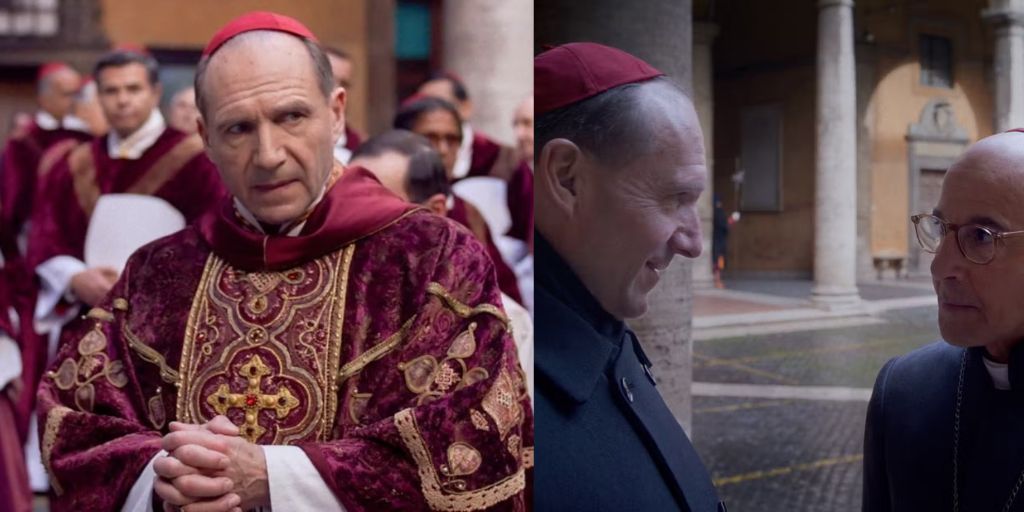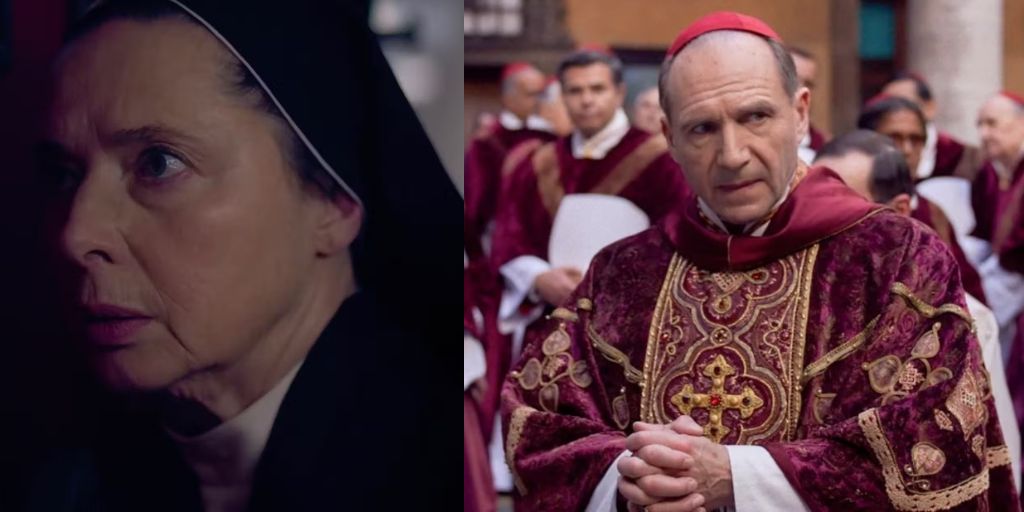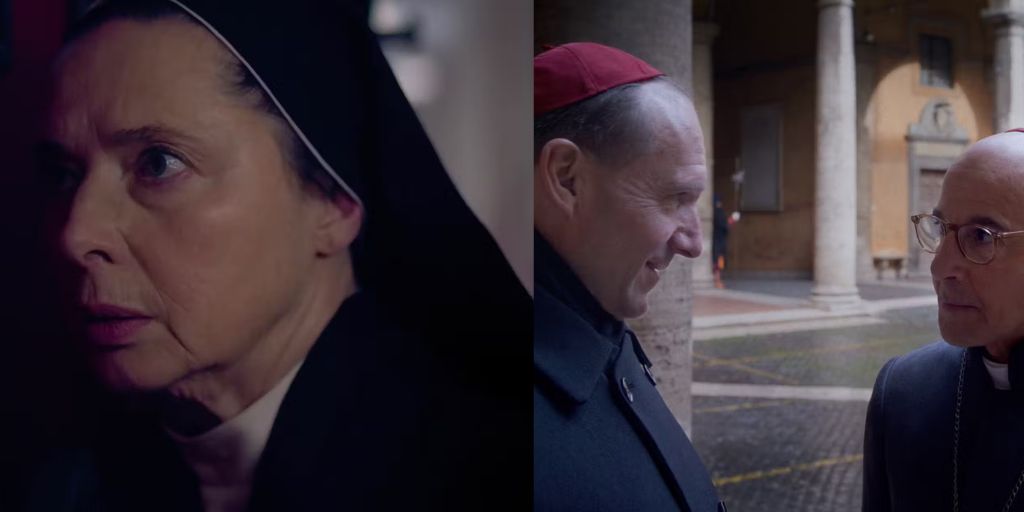When a pope dies, it signals more than just the end of a life. It marks the start of a new chapter. As soon as the pope’s death is officially confirmed, a set of well-defined events begins. These events combine ancient traditions with modern requirements.
For instance, to prevent paparazzi from capturing images, lasers are used to block the windows. Mobile phones are also collected to ensure that no one inside can communicate with the outside world. Even though the cardinals are isolated, their decisions have global implications.
A Glimpse Inside Edward Berger’s Conclave
Edward Berger’s film Conclave offers a fascinating view inside the process of choosing a new pope. The film is set in the conclave, a significant event where Cardinals from around the world gather to select a new leader from their own group.
The script, written by Peter Straughan and based on Robert Harris’s 2016 novel, is full of suspense and drama. With impressive performances from Ralph Fiennes, Stanley Tucci, John Lithgow, and Isabella Rossellini, the film is a strong contender for awards and is considered one of the best movies of the year.
A Connection to Tinker, Tailor, Soldier, Spy
Watching Conclave reminded me of another favorite film, Tomas Alfredson’s adaptation of John le Carré’s crime thriller Tinker, Tailor, Soldier, Spy.
This film is known for its perfect tone and sweeping visuals that make the tight spaces feel like the center of the world. I was pleased to find out that Peter Straughn, who co-wrote Tinker, Tailor, Soldier, Spy, also wrote the script for Conclave. His talent for complex storytelling is clearly present in both films.
A Beautiful Portrait of a Struggle for Power
In Conclave, the setting is visually stunning. While Tinker made the secretive rooms of MI6 dramatic, the setting in Conclave is even more impressive. During the election for a new pope, the cardinals are locked inside the Sistine Chapel, one of the most revered places on Earth.

Without tourists and art restorers around, they are free to talk only among themselves. They are surrounded by masterpieces from artists like Botticelli, Perugino, van den Broeck, and Michelangelo. This adds a layer of historical depth to the proceedings.
Power Corrupts In Conclave
In this sacred setting, the human struggle for power becomes apparent. Ralph Fiennes plays Cardinal Lawrence, a character torn not by his faith but by his doubts about the church itself. He is responsible for organizing the election. Bellini (Stanley Tucci) is a liberal who is running reluctantly.
His goal is to prevent the more conservative Tedesco (Sergio Castellitto) from reversing recent reforms. Cardinal Adeyemi has strong support but faces obstacles in his path.
Tremblay (John Lithgow) is a shrewd political figure, while newcomer Carlos Diehz plays Cardinal Benitez, who is introduced to the group just before the voting begins.
The Corruption of Power
As the priests vote or retreat to quiet corners to discuss their strategies, an army of nuns silently serve food and observe the discussions. Sister Agnes (Isabella Rossellini) is particularly vigilant. Her admiration for the late pope makes her cautious about the political maneuvering she witnesses.
Conclave powerfully illustrates how power can corrupt. Plato, in The Republic, suggested that the best rulers are those who are reluctant to lead, while the worst are those who are eager for power. Conclave challenges this idea by showing how even the most reluctant leaders are drawn to the lure of power.
The Cardinals, while claiming to act in the best interest of the church, commit various infractions. This shows how any system, no matter how traditional or noble, can be affected by the corrupting nature of power.
A Cinematic Triumph
Edward Berger’s previous film, All Quiet on the Western Front, was a bold and powerful retelling of a classic story. Similarly, Conclave makes the secretive process of voting just as exciting as any action scene.
The film’s cinematographer, Stéphane Fontaine, known for his work on films like Jackie, Elle, and A Prophet, brings his expertise to the narrow hallways, sunlit courtyards, and colorful figures of the Vatican.
Celebrating Conclave
In Conclave, Berger delivers a brilliant film with a compelling story and exceptional performances. Ralph Fiennes, known for his many impressive roles, gives one of his best performances yet.
The film mixes entertainment with deep ideas, creating a blend that is both engaging and thought-provoking. It’s a film that deserves to be celebrated, and I hope you agree and join in this appreciation.
The film shows themes of power and politics within one of the most sacred spaces in the world. The conclave, with its rich historical and religious significance, becomes the backdrop for a tense and dramatic narrative.

The tension is not just in the voting but also in the subtle power plays and personal ambitions of the characters. The setting of the Sistine Chapel, with its art and history, adds a dramatic layer to the unfolding drama.
As the cardinals deliberate and vote, the film captures the high stakes and the intense pressure they face. The isolation from the outside world adds to the suspense, as every move and decision is under scrutiny.
The film does a remarkable job of making the complex process of electing a new pope engaging and dramatic. It shows how even in a setting steeped in tradition and reverence, the struggle for power is a very human experience.
Conclave is a standout film that combines rich storytelling with strong performances. The portrayal of the papal election is both dramatic and insightful. The film’s scheme of power and its effects on individuals is compelling, making it a must-watch for anyone interested in political dramas and character studies.




